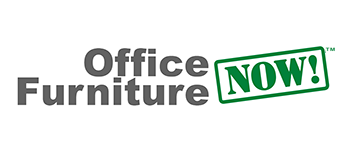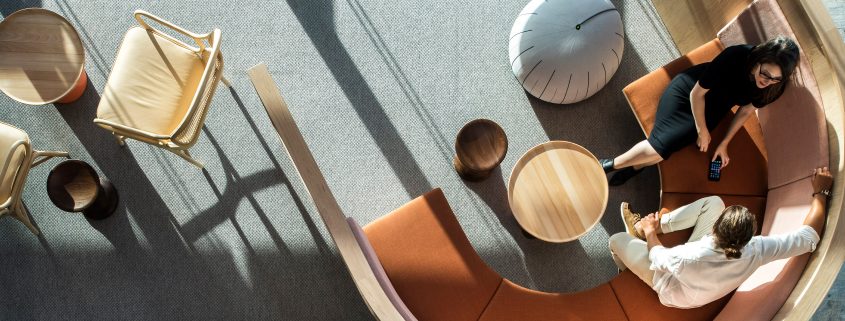Learning To Love Your Open Plan Office
Learning to love your open-plan office takes some ingenuity and willingness to set some new goals for yourself and how you work. If you are still struggling with the shift from traditional to open plan office, you may think there is just no way out. But there are some creative things you can do to make it work for you. Open plans work very well for extroverts and creative teams that thrive on social interaction and idea-sharing to get things done. But the introverts in the accounting department, who can be easily overwhelmed by stimuli and who need alone time to recharge and stay focused, might be silently struggling with the free-range workplace.
It does not matter which side of the fence you are on, over time it becomes more difficult to concentrate and stay on task in an office with a lot of peripheral noise and movement. As is often the case, you can get pulled away to collaborate on other projects or dragged into other conversations outside of your scope of work. Distractions can undermine productivity and can become counterintuitive to connectivity. Rather than engaging more with coworkers, withdrawal becomes prevalent as an act of self-preservation.
Spending eight to ten hours a day in an environment that is constantly in motion and overstimulating can leave you exhausted and scattered. Creative solutions do exist, even with a limited amount of control over a physical work environment. Those with a more introverted disposition have found tactics that work for them. Focusing on the things that you can change, no matter how small, will always inspire solutions. Here are a few we came up with from just a little search on the internet:
Take more lunches & coffee breaks by yourself. In an inclusive office culture, there can be a lot of pressure to socialize with your coworkers during breaks. But if you don’t take at least fifteen minutes to lie down in the back of your car and read a book a few times a week, stress can snowball. If you are lucky enough to work near a green space, take advantage of it with a brisk walk. Focus on finding little ways to escape outside somehow to break up the drone of the indoors with the sights and sounds of nature. It is very common for workspaces these days to utilize the roof square footage for just this kind of escape.
Develop a way to let others know you’re concentrating. It could be something as simple as wearing a set of headphones to show that you don’t want to be disturbed. Headphones are a very common sight in both open-plan and cubicle workspaces and are the least abrasive to the inclusive culture gurus around the office.
Create a sense of private space within your personal space. Many offices have a blend of standard cubicles, low cubicle walls, and benching systems. With the advent of flexible working spaces, you might be able to move around to another desk if you know you have more focused work on a particular day. If that is not possible you might have to get creative with other solutions like a coat rack just outside your area to form a pseudo-curtained privacy wall to define the space. Without a wall to keep coworkers out, this subtle buffer might do the trick. Another option that can define and sequester your space is a freestanding bookshelf or even potted plants—either larger ones on the floor or smaller ones on your desk, depending on the amount of space you have.
If you find yourself adrift in an open-plan room with no walls to buffer your workspace, and it is really affecting your focus, have a talk with your office manager about being moved to a spot against one wall. It might feel like an awkward conversation, but if you let them know that the move will improve your productivity, they might help you out. Having a wall at your back still leaves you fairly out in the open, but at least you won’t be vulnerable on all sides anymore, and that can go a long way in making you feel less under siege.
Pay attention to the times of day and days of the week that are typically quieter around the office. In any office plan environment, you will notice patterns of activity that you can make work for you. Mark the quieter times on your calendar so you can get the most out of this valuable breathing space. Schedule them as your time to get more difficult work done or just to relax at your desk while no one is looking. This might be an afternoon when a lot of people are out for meetings, or a morning when workshops are going on elsewhere. Utilize these times to take a breather and recharge your batteries by relaxing or recharge your career with an online tutorial.
Book a small meeting room on a semi-regular basis, but don’t invite anyone else. Conference rooms have gotten smaller and most open plans have plenty of glassed-walled meeting areas. There are typically no rules that state that meeting rooms should only be booked for groups, so book yourself a room for two hours to work alone without interruptions. They might be the two most blissful hours of your open-plan office life. Coworkers will just assume that a scheduled meeting room demands privacy, and you will be able to collaborate with yourself without being disturbed. It’s like the old days of having a proper office for a while, where you can disappear behind the door and turn off your phone for a bit. Huddle spaces are becoming a prominent feature in open-plan design, as are extended breakroom areas. Both are wired and conducive to some alone time, but they come without a door. If you work from a laptop, these can also be perfect escape work zones.
Stress in an open-plan office isn’t inevitable, but with some attention to detail, you can overcome it with some creative solutions. Initiate pockets of time and space where you can breathe and even enjoy your work again. You never know, you might become an unassuming trendsetter, inspiring some of those extroverts in your office to adopt your brilliant strategies and learn to nurture their own introvert qualities.
Photo by Nicole England, BakerMacKenzie
 SCHEDULE A CONSULTATION with our team to discuss your resilient workplace design. We can help you brainstorm and funnel ideas into a cohesive design plan for your office upgrade. Our team is ready to start the wonderful dialog that will establish the needs, wants, and desires for your collaborative workspace. Contact us at 512-448-3769 or experts@officefurniturenow.com
SCHEDULE A CONSULTATION with our team to discuss your resilient workplace design. We can help you brainstorm and funnel ideas into a cohesive design plan for your office upgrade. Our team is ready to start the wonderful dialog that will establish the needs, wants, and desires for your collaborative workspace. Contact us at 512-448-3769 or experts@officefurniturenow.com



